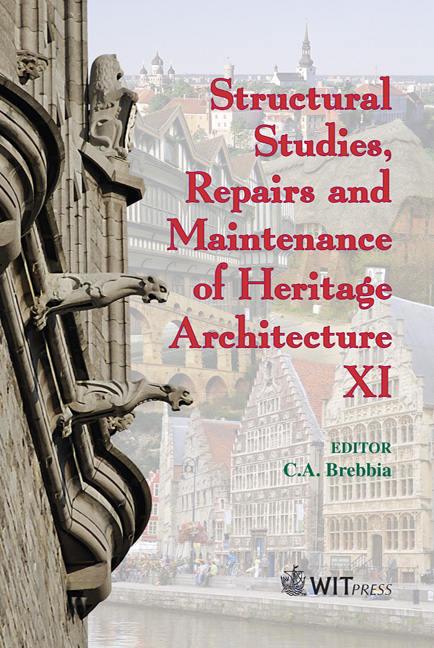Stability And Repair Works In A Cave Built With Brick Arches And Vaults In Chinchón (Madrid)
Price
Free (open access)
Transaction
Volume
109
Pages
12
Page Range
95 - 106
Published
2009
Size
2,529 kb
Paper DOI
10.2495/STR090091
Copyright
WIT Press
Author(s)
E. González & T. Fernández
Abstract
This paper describes the unexpected finding of a cave built with brick arches and vaults located 10 m under a house in Chinchón (Madrid). One of the main arches had settled down 14cm, another had collapsed, and a steel beam supporting the main gallery was also found. There is no evidence of any written or graphic document of its existence. One of the most interesting features of the cave is its depth and the adoption of a vaulted system. Additionally, floor and elevation plans appear to be very similar to a small chapel with an irregular polygonal apse covered with a semi-spherical brick vault. Next to this apse a semicircular brick-arched ceiling supported by the two main semicircular arches is developed with a similar appearance to that observed in a transept, which may suggest a religious purpose. This article describes the proportions, the stability, the ‘equilibrium approach’ of loads and the resistance of brick arches and vaults, explaining why this cave was reinforced with brickwork while many others were not. This study includes the following: a) properties of materials; b) brickwork geometry; c) calculation of loads and d) application of Masonry Structural Theory developed by Heyman, which is the key to a deeper understanding of masonry structures and repair needs. Keywords: brick arches and vaults, masonry structural studies, line of thrust, underground constructions, construction history, rehabilitation works.
Keywords
brick arches and vaults, masonry structural studies, line of thrust, underground constructions, construction history, rehabilitation works




